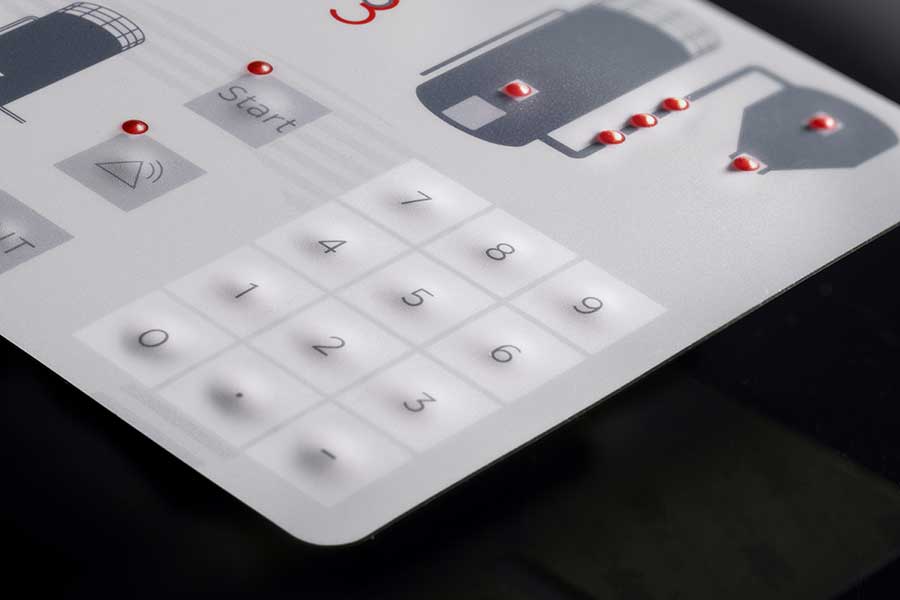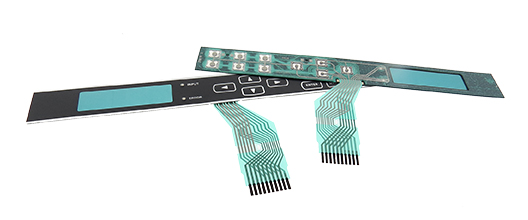Discover the Function of Membrane Switches in Medical Tools and Devices
Discover the Function of Membrane Switches in Medical Tools and Devices
Blog Article
Membrane Changes Explained: A Comprehensive Overview to Their Advantages
Membrane layer switches stand for a advanced and functional service for developing user interfaces across a variety of markets. As markets significantly look for efficient and reliable control user interfaces, comprehending the particular advantages and applications of membrane changes becomes essential.
What Are Membrane Switches?

When stress is related to the membrane button, the layers make call, completing an electrical circuit. This simple mechanism permits a variety of applications, from consumer electronics to industrial equipment. Membrane layer switches are often designed to be immune and water resistant to dust and pollutants, making them ideal for atmospheres where sturdiness is vital.
In addition, the versatility of the materials used in membrane changes promotes innovative layouts that can comply with different forms and measurements. This flexibility adds to their popularity in varied areas, including clinical tools, automotive controls, and home devices. Overall, membrane layer changes represent a crucial element in modern-day interface technology, linking the void in between individuals and electronic systems.
Trick Advantages of Membrane Layer Switches
Amongst the myriad of user interface alternatives available, membrane changes attract attention for their unique mix of benefits. Among the main benefits is their portable and light-weight design, which permits integration into a variety of tools without adding considerable bulk. This is especially advantageous in applications where space is limited.
In addition, membrane layer switches over deal toughness and resistance to ecological elements. They are normally built with materials that can stand up to wetness, dust, and numerous chemicals, making them ideal for harsh conditions. This durability adds to a longer life-span contrasted to traditional mechanical switches.
An additional considerable benefit is the convenience in personalization. Membrane switches can be printed with different graphics, shades, and textures, enabling for tailored styles that satisfy specific branding or practical requirements. This versatility includes the number of layers and circuit alternatives, giving engineers with multiple configurations.
In addition, the responsive responses offered by some membrane layer switches boosts individual experience, making them a lot more user-friendly to run. Last but not least, the simplicity of cleansing and maintenance additionally solidifies membrane layer switches as a practical option in both customer and commercial applications. Membrane Switches. In general, these vital benefits make them a recommended remedy for lots of designers and producers
Applications in Numerous Industries
Just how do membrane switches find their place throughout varied markets? Their versatility and functionality make them important elements in sectors varying from medical care to consumer electronic devices. In medical tools, membrane switches are utilized for their here convenience of cleaning and resistance to contamination, guaranteeing hygiene in environments where sterility is essential.
In the customer electronic index devices industry, these buttons provide sleek, user-friendly user interfaces that enhance item aesthetics while maintaining durability versus damage. Automotive applications benefit from membrane layer changes too, where they are made use of in control panels and control board, offering trusted efficiency in challenging problems.
In addition, industrial equipment utilizes membrane buttons for control panels as a result of their robustness, ability to hold up against rough environments, and adjustable styles that deal with particular functional needs. The food sector leverages membrane switches for their simplicity of use and resistance to spills, ensuring functional efficiency in fast-paced setups.
Eventually, the flexibility of membrane layer changes across these varied applications emphasizes their vital duty in modern technology, enhancing customer interaction while satisfying industry-specific needs. Their continued evolution assures more combination right into arising areas and innovative products.
Layout and Personalization Alternatives
The design and modification choices readily available for membrane switches are critical for tailoring user interfaces to meet specific individual needs and visual preferences. These switches can be designed in numerous forms, dimensions, and formats, allowing for smooth integration right into varied applications. The flexibility in layout implies that manufacturers can develop one-of-a-kind user interfaces that boost functionality and maintain brand name identification.
Customized colors, graphics, and textures can be related to the surface of the membrane layer switch, offering a possibility for branding and individual interaction. Additionally, backlighting choices, such as LED lighting, can be included to boost exposure in low-light problems, hence improving performance.
Useful elements can likewise be personalized, including responsive responses and actuation pressure, which can be changed to match different user interactions. The selection of products, such as polyester or polycarbonate, enables variations in resilience and environmental resistance, dealing with the details needs of different sectors.
Inevitably, the comprehensive style and modification capabilities of membrane switches allow firms to develop user-friendly and aesthetically enticing user interfaces, ensuring that their products satisfy both practical and aesthetic needs properly. Membrane Switches.
Considerations for Execution
Applying membrane changes requires cautious consideration of numerous variables to make sure ideal capability and individual experience. Factors such as direct exposure to wetness, extreme temperatures, and chemical compounds can dramatically view affect the button's performance and long life.

An additional crucial aspect is the button's design and format. Guaranteeing that the responsive responses and actuation force straighten with individual assumptions enhances functionality. Performing user screening can give valuable insights into the optimum design.
Furthermore, compatibility with digital components should be analyzed. The switch's circuitry must straighten with the general system design, ensuring dependable signal transmission and minimizing disturbance.
Additionally, production approaches and costs ought to be reviewed. The choice between custom designs and standard designs can affect both budget plan and lead time.
Finally, take into consideration upkeep and repair work. Membrane switches may call for specific cleansing and care treatments to keep their look and capability in time. By dealing with these considerations, companies can implement membrane layer switches that meet their functional needs while supplying a positive customer experience.

Final Thought
In verdict, membrane layer changes stand for a resilient and flexible control interface ideal for a large variety of applications throughout several industries. Membrane Switches. As innovation continues to progress, the significance of membrane buttons in modern tools continues to be considerable, offering both performance and aesthetic charm.
Membrane layer switches stand for a versatile and innovative solution for developing user interfaces across a range of markets.Comprehending the basic components of modern electronic interfaces, membrane layer buttons are a kind of customer interface device that are composed of flexible, slim layers of product. Overall, membrane layer switches represent a vital element in modern customer interface modern technology, bridging the space between users and electronic systems.
Amongst the myriad of individual interface options offered, membrane layer switches over stand out for their distinct combination of benefits.The design and customization alternatives available for membrane buttons are important for customizing user interfaces to satisfy particular individual needs and aesthetic preferences.
Report this page